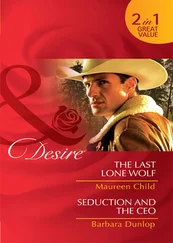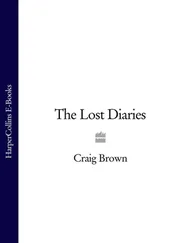Richard Edgcumbe - Byron - The Last Phase
Здесь есть возможность читать онлайн «Richard Edgcumbe - Byron - The Last Phase» — ознакомительный отрывок электронной книги совершенно бесплатно, а после прочтения отрывка купить полную версию. В некоторых случаях можно слушать аудио, скачать через торрент в формате fb2 и присутствует краткое содержание. Жанр: literature_19, Поэзия, foreign_antique, foreign_prose, foreign_poetry, Биографии и Мемуары, на английском языке. Описание произведения, (предисловие) а так же отзывы посетителей доступны на портале библиотеки ЛибКат.
- Название:Byron: The Last Phase
- Автор:
- Жанр:
- Год:неизвестен
- ISBN:нет данных
- Рейтинг книги:3 / 5. Голосов: 1
-
Избранное:Добавить в избранное
- Отзывы:
-
Ваша оценка:
- 60
- 1
- 2
- 3
- 4
- 5
Byron: The Last Phase: краткое содержание, описание и аннотация
Предлагаем к чтению аннотацию, описание, краткое содержание или предисловие (зависит от того, что написал сам автор книги «Byron: The Last Phase»). Если вы не нашли необходимую информацию о книге — напишите в комментариях, мы постараемся отыскать её.
Byron: The Last Phase — читать онлайн ознакомительный отрывок
Ниже представлен текст книги, разбитый по страницам. Система сохранения места последней прочитанной страницы, позволяет с удобством читать онлайн бесплатно книгу «Byron: The Last Phase», без необходимости каждый раз заново искать на чём Вы остановились. Поставьте закладку, и сможете в любой момент перейти на страницу, на которой закончили чтение.
Интервал:
Закладка:
On the Lung’ Arno Mediceo, east of the Ponte di Mezzo, stands the Palazzo Lanfranchi, which is supposed to have been built by Michael Angelo. Here, on November 2, 1821, Lord Byron arrived, with his servants, his horses, his monkey, bulldog, mastiff, cats, peafowl, hens, and other live stock, which he had brought with him from Ravenna. In another quarter of the city resided Count Rugiero Gamba, his son Pietro, and his daughter Countess Teresa Guiccioli. On the other side of the Arno, nearly opposite to Byron’s residence, lived the poet Shelley, with his wife and their friends Edward and Jane Williams.
In the middle of November, Captain Thomas Medwin, a relative of Shelley’s, arrived at Pisa; and on January 14, 1822, came Edward John Trelawny, who was destined to play so important a part in the last scenes of the lives of both Shelley and Byron.
Byron was at this time in his thirty-third year. Medwin thus describes his personal appearance:
‘I saw a man of about five feet seven or eight, apparently forty years of age. As was said of Milton, Lord Byron barely escaped being short and thick. His face was fine, and the lower part symmetrically moulded; for the lips and chin had that curved and definite outline that distinguishes Grecian beauty. His forehead was high, and his temples broad; and he had a paleness in his complexion almost to wanness. His hair, thin and fine, had almost become grey, and waved in natural and graceful curls over his head, that was assimilating itself fast to the “bald first Cæsar’s.” He allowed it to grow longer behind than it is accustomed to be worn, and at that time had mustachios which were not sufficiently dark to be becoming. In criticizing his features, it might, perhaps, be said that his eyes were placed too near his nose, and that one was rather smaller than the other. They were of a greyish-brown, but of a peculiar clearness, and when animated possessed a fire which seemed to look through and penetrate the thoughts of others, while they marked the inspirations of his own. His teeth were small, regular, and white. I expected to discover that he had a club-foot; but it would have been difficult to have distinguished one from the other, either in size or in form. On the whole, his figure was manly, and his countenance handsome and prepossessing, and very expressive. The familiar ease of his conversation soon made me perfectly at home in his society.’
Trelawny’s description is as follows:
‘In external appearance Byron realized that ideal standard with which imagination adorns genius. He was in the prime of life, thirty-four; of middle height, five feet eight and a half inches; regular features, without a stain or furrow on his pallid skin; his shoulders broad, chest open, body and limbs finely proportioned. His small highly-finished head and curly hair had an airy and graceful appearance from the massiveness and length of his throat; you saw his genius in his eyes and lips.’
Trelawny could find no peculiarity in his dress, which was adapted to the climate. Byron wore:
‘a tartan jacket braided – he said it was the Gordon pattern, and that his mother was of that race – a blue velvet cap with a gold band, and very loose nankin trousers, strapped down so as to cover his feet. His throat was not bare, as represented in drawings.’
Lady Blessington, who first saw Byron in April of the following year, thus describes him:
‘The impression of the first few minutes disappointed me, as I had, both from the portraits and descriptions given, conceived a different idea of him. I had fancied him taller, with a more dignified and commanding air; and I looked in vain for the hero-looking sort of person, with whom I had so long identified him in imagination. His appearance is, however, highly prepossessing. His head is finely shaped, and his forehead open, high, and noble; his eyes are grey and full of expression, but one is visibly larger than the other. The nose is large and well shaped, but, from being a little too thick , it looks better in profile than in front-face; his mouth is the most remarkable feature in his face, the upper lip of Grecian shortness, and the corners descending; the lips full, and finely cut.
‘In speaking, he shows his teeth very much, and they are white and even; but I observed that even in his smile – and he smiles frequently – there is something of a scornful expression in his mouth, that is evidently natural, and not, as many suppose, affected. This particularly struck me. His chin is large and well shaped, and finishes well the oval of his face. He is extremely thin – indeed, so much so that his figure has almost a boyish air. His face is peculiarly pale, but not the paleness of ill-health, as its character is that of fairness, the fairness of a dark-haired person; and his hair (which is getting rapidly grey) is of a very dark brown, and curls naturally: he uses a good deal of oil in it, which makes it look still darker. His countenance is full of expression, and changes with the subject of conversation; it gains on the beholder the more it is seen, and leaves an agreeable impression… His whole appearance is remarkably gentlemanlike, and he owes nothing of this to his toilet, as his coat appears to have been many years made, is much too large – and all his garments convey the idea of having been purchased ready-made, so ill do they fit him. There is a gaucherie in his movements, which evidently proceeds from the perpetual consciousness of his lameness, that appears to haunt him; for he tries to conceal his foot when seated, and when walking has a nervous rapidity in his manner. He is very slightly lame, and the deformity of his foot is so little remarkable, that I am not now aware which foot it is.
‘His voice and accent are peculiarly agreeable, but effeminate – clear, harmonious, and so distinct, that though his general tone in speaking is rather low than high, not a word is lost. His manners are as unlike my preconceived notions of them as is his appearance. I had expected to find him a dignified, cold, reserved, and haughty person, but nothing can be more different; for were I to point out the prominent defect of Lord Byron, I should say it was flippancy, and a total want of that natural self-possession and dignity, which ought to characterize a man of birth and education.’
Medwin tells us, in his ‘Journal of the Conversations of Lord Byron,’ that Byron’s voice had a flexibility, a variety in its tones, a power and pathos, beyond any he ever heard; and his countenance was capable of expressing the tenderest as well as the strongest emotions, which would perhaps have made him the finest actor in the world.
The Countess Guiccioli, who had a longer acquaintance with Byron than any of those who have attempted to portray him, says:
‘Lord Byron’s eyes, though of a light grey, were capable of all extremes of expression, from the most joyous hilarity to the deepest sadness, from the very sunshine of benevolence to the most concentrated scorn or rage. But it was in the mouth and chin that the great beauty as well as expression of his fine countenance lay. His head was remarkably small, so much so as to be rather out of proportion to his face. The forehead, though a little too narrow, was high, and appeared more so from his having his hair (to preserve it, as he said) shaved over the temples. Still, the glossy dark brown curls, clustering over his head, gave the finish to its beauty. When to this is added that his nose, though handsomely, was rather thickly shaped, that his teeth were white and regular, and his complexion colourless, as good an idea, perhaps, as it is in the power of mere words to convey may be conceived of his features. In height he was five feet eight inches and a half. His hands were very white, and, according to his own notions of the size of hands as indicating birth, aristocratically small… No defect existed in the formation of his limbs; his slight infirmity was nothing but the result of weakness of one of his ankles. His habit of ever being on horseback had brought on the emaciation of his legs, as evinced by the post-mortem examination; the best proof of this is the testimony of William Swift, bootmaker at Southwell, who had the honour of working for Lord Byron from 1805 to 1807.’
Читать дальшеИнтервал:
Закладка:
Похожие книги на «Byron: The Last Phase»
Представляем Вашему вниманию похожие книги на «Byron: The Last Phase» списком для выбора. Мы отобрали схожую по названию и смыслу литературу в надежде предоставить читателям больше вариантов отыскать новые, интересные, ещё непрочитанные произведения.
Обсуждение, отзывы о книге «Byron: The Last Phase» и просто собственные мнения читателей. Оставьте ваши комментарии, напишите, что Вы думаете о произведении, его смысле или главных героях. Укажите что конкретно понравилось, а что нет, и почему Вы так считаете.












